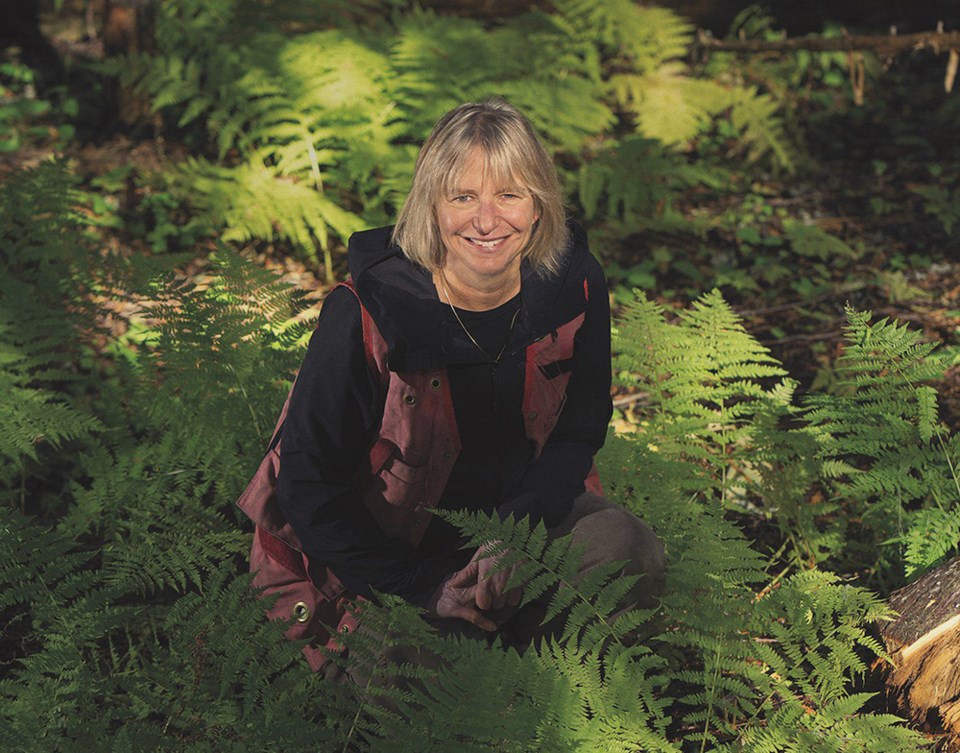Pressure on B.C. Premier John Horgan is climbing as national and global celebrities begin to throw their weight behind public campaigns to save the province’s ancient forests.
But Forest Minister Katrine Conroy is adamant star power won’t play a role in shaping B.C.’s old-growth policy.
More than a hundred luminaries from across the political and cultural spectrum signed an open letter to Horgan calling on him to save at-risk big-tree ecosystems, which make up only 2.7 per cent of unprotected forest in the province, said Nicole Rycroft, executive director of Canopy.
Grand Chief Stewart Phillip, president of the Union of British Columbia Indian Chiefs, international climate activist Greta Thunberg, artists Neil Young and Jane Fonda and former prime minister Brian Mulroney are some of the prominent voices looking to save the West Coast’s iconic forests, Rycroft said.
“The calibre of signatories and breadth of perspectives represented in this ad underscores how important it is that we protect the incredible natural legacy found in British Columbia,” she said.
The open letter went to press hard on the heels of a social media campaign launched by another environmental group, Stand.earth, which includes a video featuring Hollywood star Mark Ruffalo, environmentalist David Suzuki and Canadian author Margaret Atwood.
Even though the NDP government has yet to fully implement the recommendations from the old-growth strategic review and scientists have identified areas of at-risk old growth needing protection through logging deferrals, the chainsaws haven’t stopped, said Tzeporah Berman, international program director of Stand.earth.
“With unprecedented media coverage, photographs of the massive trees going viral and people around the world watching and speaking out, now is the time to act,” Berman said.
However, the province is pushing back on any suggestion the celebrity effect and any ensuing public pressure will shape or speed policy decisions, the Forest Ministry stated.
“How old-growth forests are managed isn’t about celebrities, it’s about a sustainable approach to protecting biodiversity and reconciliation with Indigenous Peoples,” the ministry said in an emailed statement.
“We are committed to that work, and we look forward to working with workers, industry, communities and environmental organizations as we develop that comprehensive plan.”
The province has deferred logging in 11 areas across B.C, including recent parcels in the disputed Fairy Creek watershed and the Central Walbran Valley, the ministry said, adding there will likely be more deferrals in the summer.
“We know there is much more work to do, and we are committed to a comprehensive approach for how old-growth forests are managed in our province.”
However, the province’s deferrals so far have done little to abate public opinion around the need to better protect B.C.’s big trees — with 85 per cent of residents polled wanting more action to protect old growth.
And the nine-month-long old-growth blockades at Fairy Creek remain in Horgan’s riding, with more than 250 activist arrests taking place as of the weekend.
Securing celebrities or prominent individuals to advertise or increase support for a social or environmental cause is a long-standing practice, said David Tindall, a sociology professor at the University of British Columbia (UBC).
Rather than actually exerting pressure on politicians, the celebrity effect is mostly used to grow the base of people who might care about an issue, said Tindall, who researches social conflict around environmental issues.
“When celebrities are involved, the people who follow them, or are susceptible to being influenced by them, may sometimes get involved in some kind of social movement campaign they might not have been interested in the first place,” he said.
And if enough people or voters recruited, then government might take notice, he added.
“If it can really change public opinion, or the number of people more generally that take a particular position on an issue, then the government sees that,” Tindall said.
“And more importantly, if they might eventually show up and vote on the issue, then I think it has that kind of indirect effect (on politicians).”
Suzanne Simard, author of the bestselling non-fiction book Finding the Mother Tree, said she's studied forests for decades and the immediate protection of old-growth forests in the province is urgent.
The province must both stop old-growth logging and reduce the annual allowable cut across B.C., said Simard, a forestry professor at UBC.
Big-tree ecosystems act as hubs for vast interconnected fungal networks, said Simard, who is participating in both the public environmental campaigns.
“It is essential, for the health of the forest, and the health of our planet, that we do everything we can to keep them standing,” she said.
Politicians need to be pushed to alter the status quo and make the right decisions, Simard added.
“Unless there's pressure, they won't act. It's too easy for them to just carry on business as usual,” she said.
“I think we're on the cusp of making some changes, but change only happens if you push, push, push.”



